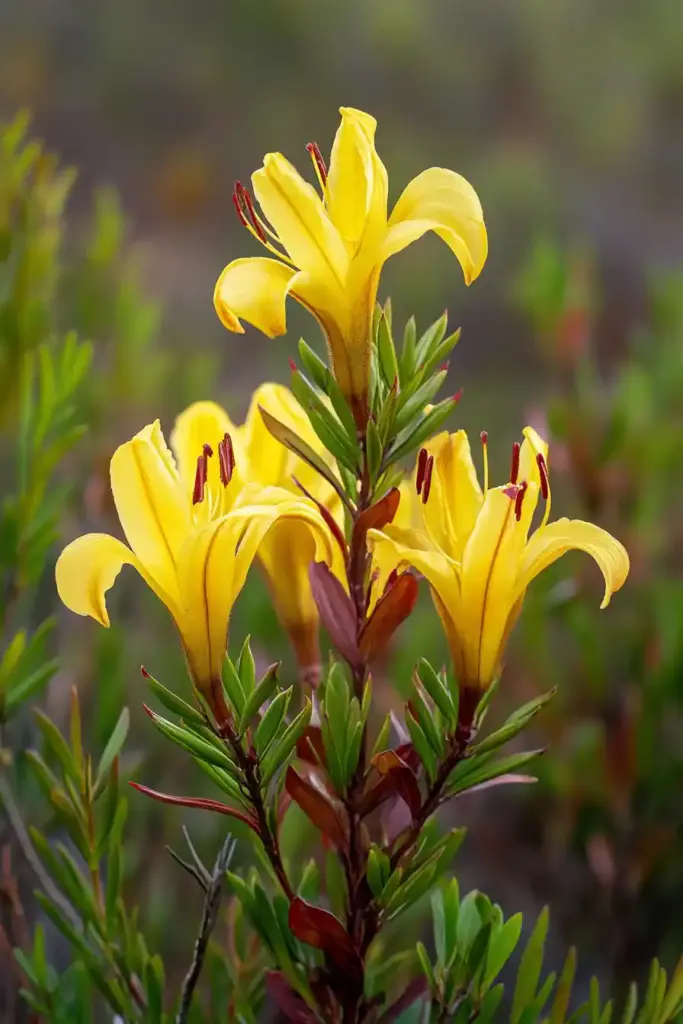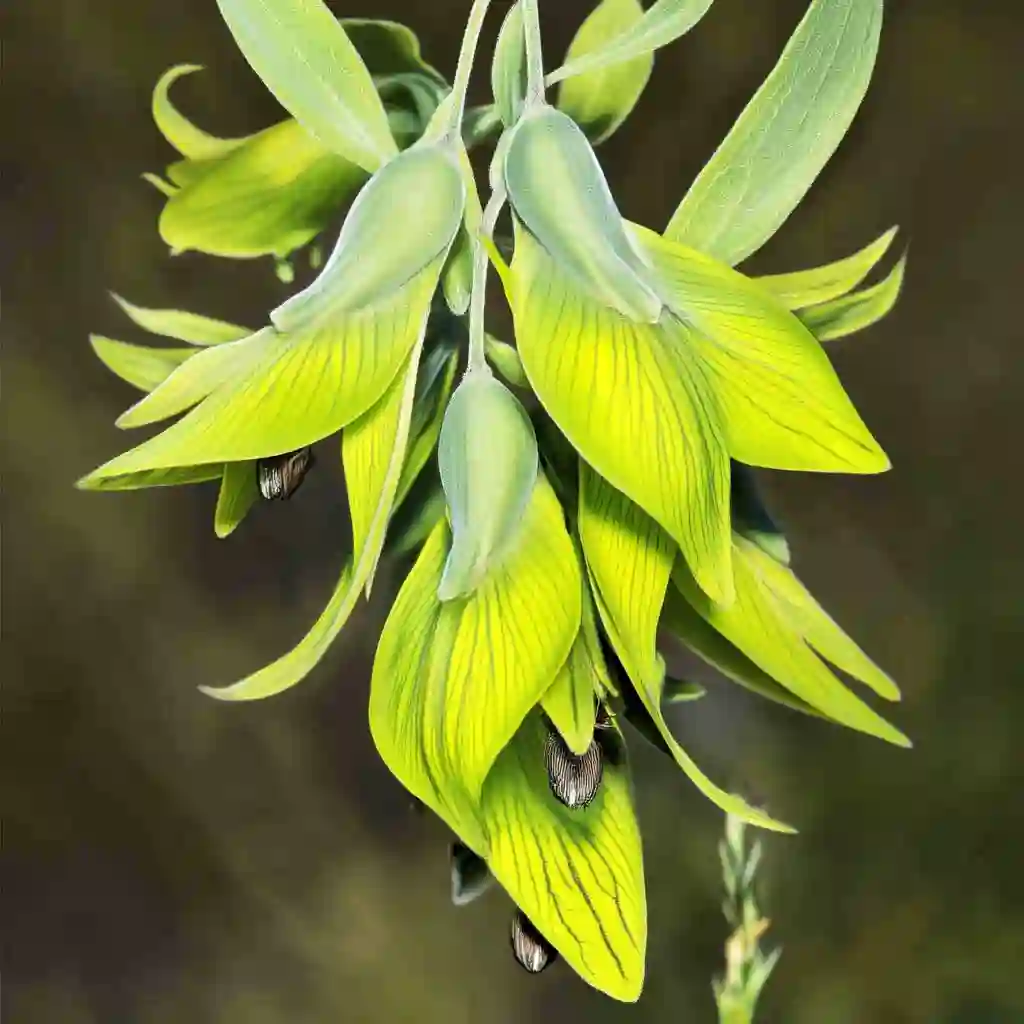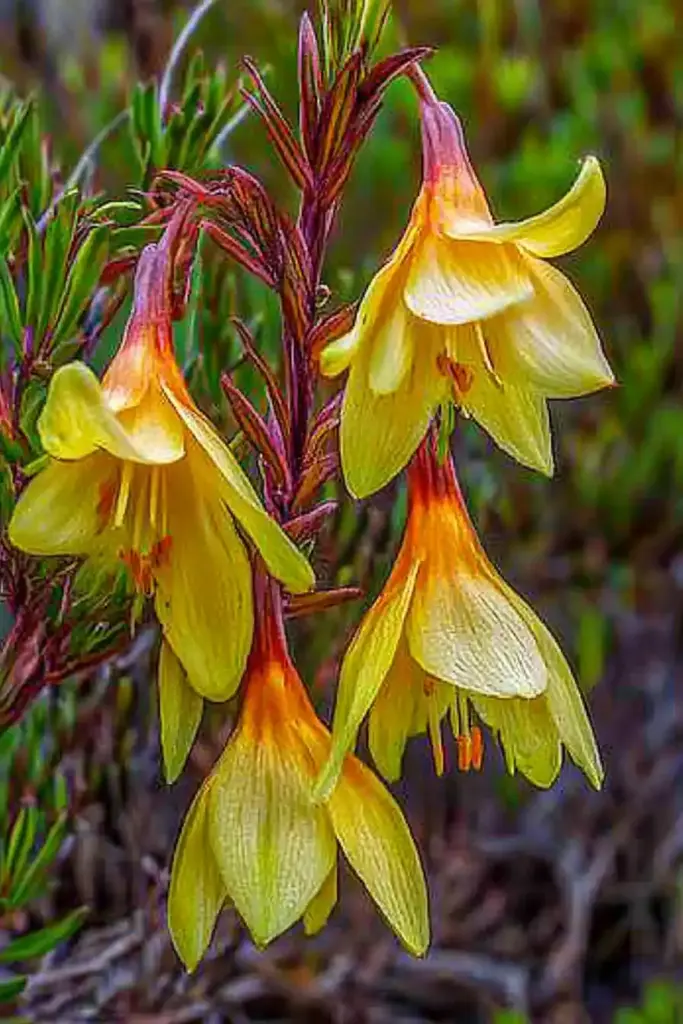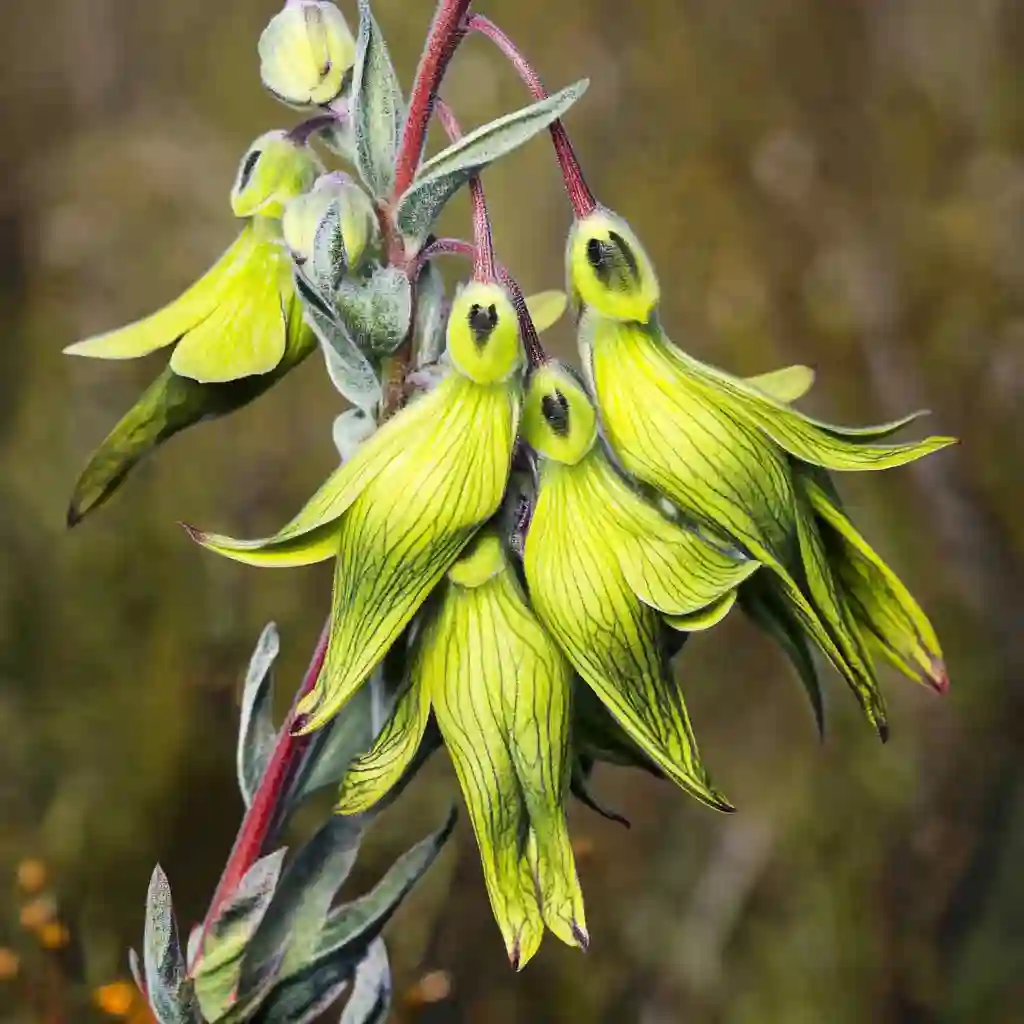Ever stumbled upon a flower that looks like a hummingbird mid-flight? Meet the Green Birdflower (Crotalaria cunninghamii)—a botanical wonder that’s sparked online fascination for its surreal, bird-shaped blooms. Native to Northern Australia, this rare flowering shrub has earned its nickname thanks to petals that uncannily resemble tiny green hummingbirds sipping nectar from an invisible source.
Besides being a visual marvel, the Green Birdflower carries medicinal history, with Aboriginal communities traditionally using its sap to treat eye infections. With its striking appearance and resilience in arid climates, it’s no surprise this plant has become a favorite among nature enthusiasts and xeriscape gardeners alike.
Let’s dive into everything you need to know about growing and caring for Crotalaria cunninghamii in your garden.
Quick Facts & Botanical Insights

Before you start planning a spot in your garden for the Green Birdflower, here’s a quick rundown of the plant’s most notable traits:
🌿 Quick Facts
- Scientific Name: Crotalaria cunninghamii
- Common Names: Green Birdflower, Regal Birdflower
- Plant Type: Perennial shrub
- Height: Typically 1–3 meters (3–10 feet)
- Native Range: Inland Northern Australia
- Flowering Season: Winter to spring (occasionally autumn)
- Lifespan: Long-lived in the right conditions (perennial)
- Pollinators: Native bees and other local insects
- Toxicity: Non-toxic to humans; attractive to beneficial pollinators
🌸 Botanical Insights
- Crotalaria cunninghamii* belongs to the Fabaceae (pea) family, which explains its flower structure—though unlike your average pea flower, this one steals the show with blooms that mimic hummingbirds in flight.
- The plant produces large green pea-shaped flowers streaked with fine black lines. These grow on long terminal spikes and appear to “perch” like birds on a branch.
- The club-shaped seed pods that follow are up to 50 mm long and rattle when shaken—an attribute that inspired the genus name Crotalaria, from the Greek krotalon, meaning “rattle.”
🌱 Cultural & Medicinal Significance
- The sap of the leaves has been used traditionally by Aboriginal Australians to treat eye infections, showcasing the plant’s medicinal relevance.
- Though not widely cultivated outside its native range, the Green Birdflower is increasingly admired for desert landscaping and native plant gardens due to its drought tolerance and unique visual appeal.
Ideal Growing Conditions for Green Birdflower
If you’re eager to grow your own Green Birdflower (Crotalaria cunninghamii), understanding its natural habitat is key. This plant is a true survivor of the Australian outback, thriving in sandy, sun-soaked environments. Here’s how to recreate those conditions in your garden for a healthy, flowering shrub.
☀️ Light Requirements
- Full sun is essential. Aim for at least 6–8 hours of direct sunlight daily.
- Partial shade can stunt growth and reduce blooming, so choose the sunniest spot in your garden.
🌡️ Temperature & Climate
- Prefers warm, dry climates typical of USDA hardiness zones 9–11.
- Not frost-hardy—temperatures below 40°F (4°C) can damage or kill the plant.
- Best grown outdoors in arid and semi-arid regions, or in containers that can be moved indoors during colder months.
🌱 Soil Preferences
- Requires light, sandy, well-draining soil—think desert conditions.
- Avoid heavy clay soils, which retain too much water and can lead to root rot.
- pH range: Neutral to slightly acidic (around 6.0–7.0).
💧 Watering Needs
- Drought-tolerant once established, but benefits from occasional deep watering during prolonged dry spells.
- Let the soil dry out completely between waterings.
- Overwatering is the most common cause of problems—less is more with this plant!
🌬️ Air Circulation & Wind
- Loves open, breezy spaces—excellent airflow helps prevent mildew or fungal issues.
- Its natural habitat includes sandy dunes, so exposed conditions aren’t an issue.
Step-by-Step Planting Guide for Green Birdflower
Ready to bring the Green Birdflower to life in your garden? Whether you’re starting from seed or transplanting a young shrub, follow this guide to ensure your plant takes root and thrives.

🌿 Option 1: Growing from Seed
Step 1: Scarify the Seeds
- Crotalaria seeds have a hard coat. To encourage germination, lightly nick or sand the seed surface or soak in warm water for 12–24 hours before planting.
Step 2: Prepare the Soil
- Choose a sunny location with loose, sandy, well-drained soil.
- If growing in a pot, use a cactus/succulent mix or make your own with sand, perlite, and compost.
Step 3: Plant the Seeds
- Sow seeds about 6 mm (¼ inch) deep.
- Space them at least 30–60 cm (1–2 feet) apart to allow for mature spread.
Step 4: Water Sparingly
- Gently water to moisten the soil, but do not overwater.
- Keep the soil slightly damp until seedlings emerge (7–21 days), then gradually reduce watering.
🪴 Option 2: Transplanting Nursery Starts
Step 1: Acclimate the Plant
- If your plant was grown in a greenhouse or indoors, let it adjust to outdoor conditions for a few days (harden off by placing it outside for a few hours daily).
Step 2: Dig the Hole
- Make a hole twice as wide as the root ball and just as deep.
- Mix in some compost or aged manure if the soil is poor, but keep amendments minimal—it prefers lean soil.
Step 3: Transplant
- Gently remove the plant from its pot and place it in the hole.
- Backfill and press soil down firmly to remove air pockets.
Step 4: Water In
- Give the plant a good deep watering after transplanting.
- Mulch lightly around the base to retain moisture and reduce weed competition (use gravel or bark, not heavy mulch).
Bonus Tip: This plant can also thrive in large pots or raised beds, especially in cooler climates where it may need to be overwintered indoors.
Maintenance & Ongoing Care
The Green Birdflower (Crotalaria cunninghamii) is relatively low-maintenance once established, making it a great choice for gardeners looking for unique plants that don’t require constant attention. That said, a few smart practices will keep your plant healthy, shapely, and flowering like a pro.
✂️ Pruning & Shaping
- Light pruning can help encourage bushier growth and more blooms.
- After flowering, trim back spent flower spikes to promote additional flushes.
- Remove any dead or damaged branches at the base to maintain a tidy shape.
🌱 Feeding
- This plant doesn’t need much feeding. In fact, over-fertilizing can reduce flowering.
- If your soil is very poor, a light application of low-nitrogen fertilizer (like a 3-8-8 mix) in early spring will do.
- Avoid high-nitrogen fertilizers, which lead to excess foliage and fewer flowers.
💧 Watering Routine
- Once established, water deeply but infrequently.
- During hot, dry spells, water about once every 10–14 days.
- Container-grown plants may require more frequent watering, especially in summer heat.
🪴 Container Care Tips
- If growing in pots, choose unglazed clay containers for better breathability.
- Ensure containers have excellent drainage holes to prevent soggy roots.
- Repot every 2–3 years to refresh soil and prevent root binding.
🌸 Flowering Cycle
- Expect flowering from winter through spring, sometimes stretching into autumn.
- If grown in optimal conditions (sunny, warm, and well-drained), you may enjoy multiple blooming cycles per year.
Pests, Diseases & Organic Solutions
The Green Birdflower is fairly resilient when grown in its ideal environment, but like all plants, it can occasionally face challenges from pests or disease. Fortunately, most issues are manageable with organic and eco-friendly methods.
🐛 Common Pests
1. Aphids
- These tiny, sap-sucking insects may cluster on new shoots and flower spikes.
- Symptoms: Curling leaves, sticky residue (honeydew), and stunted growth.
Solution:
- Spray with neem oil or a homemade soap solution (1 tsp mild dish soap per 1 liter of water).
- Introduce beneficial insects like ladybugs to control aphid populations naturally.
2. Spider Mites
- Especially in dry, hot conditions, spider mites can appear as tiny red or brown dots on the undersides of leaves.
Solution:
- Rinse plant with a strong spray of water to dislodge mites.
- Apply insecticidal soap or neem oil weekly until under control.
- Keep humidity up slightly to discourage infestations (especially in pots).
3. Caterpillars
- Some species may nibble on foliage or flowers, though damage is usually minimal.
Solution:
- Handpick caterpillars when visible.
- Use BT (Bacillus thuringiensis) for a biological, bee-safe treatment.
🍂 Common Diseases

1. Root Rot
- Caused by overwatering or poor drainage.
- Symptoms: Yellowing leaves, mushy stems near soil, foul smell from the base.
Solution:
- Improve drainage by amending soil with sand or gravel.
- Avoid overwatering—only water when soil is dry.
- Remove and discard infected roots and replant in fresh, dry soil if caught early.
2. Powdery Mildew
- May appear in humid or poorly ventilated conditions, especially on crowded plants.
Solution:
- Improve airflow around the plant.
- Apply a baking soda spray (1 tbsp baking soda + 1/2 tsp oil + 1 liter water).
- Remove affected leaves if infection is severe.
✅ General Prevention Tips
- Space plants properly to encourage airflow.
- Avoid overhead watering to keep leaves dry.
- Rotate container plants periodically to even out sun exposure.
With these eco-friendly practices, your Green Birdflower can remain pest-free and healthy all season long.
Expert Tips & Frequently Asked Questions (FAQs)
Whether you’re a seasoned gardener or a curious beginner, these expert insights and commonly asked questions will help you get the most out of your Green Birdflower (Crotalaria cunninghamii).
🌟 Expert Tips for Success
1. Mimic Its Native Habitat
- Think desert garden vibes: full sun, sandy soil, and low humidity.
- Pair with other drought-tolerant natives or succulents for a visually cohesive and water-wise design.
2. Use Raised Beds in Cooler Zones
- In temperate climates, raised beds can help mimic the plant’s need for warm roots and excellent drainage.
- Combine with reflective mulch (like light-colored gravel) to amplify warmth and light.
3. Attract Beneficial Insects
- Its unique flowers are not only beautiful but also attract native bees and hoverflies, helping pollinate nearby plants.
4. Save Seeds for the Future
- Let a few seed pods mature and dry on the plant.
- Crack them open to collect seeds, which can be stored in a cool, dry place for up to 2 years.
❓ Frequently Asked Questions
Q: Can I grow Green Birdflower indoors?
A: It’s tricky. While it can be started indoors or grown in a sunroom or greenhouse, it needs very high light levels and space to grow up to 3 meters tall. It performs best outdoors in full sun.
Q: Is this plant really related to peas?
A: Yes! It’s a member of the Fabaceae family, the same family as peas and beans. That’s why its flowers have a similar shape, even though they’re far more dramatic in form.
Q: Is it safe around pets and children?
A: While not known to be toxic, the plant is not typically listed as edible, so it’s best kept away from curious pets or small children. The plant is mainly grown for ornamental and traditional medicinal use.
Q: Does it need any support or staking?
A: Not usually. The plant has a woody, upright habit and holds its own, but if it becomes top-heavy when flowering, light staking may help in windy areas.
Q: Why isn’t my plant flowering?
A: Common reasons include:
- Too much shade
- Too much water or fertilizer
- Immature plant (it can take a season or two before blooming heavily)
Be patient, and make sure the plant gets full sun and lean soil conditions.




